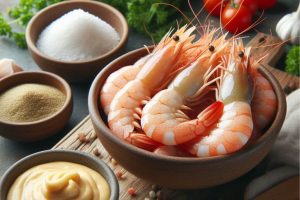What is the best substitute for Shrimp Paste
Do you need a substitute for shrimp paste? So, picture this: You’re all set to whip up your favorite Southeast Asian dish, and the recipe calls for shrimp paste. Uh-oh, no shrimp paste in the pantry. Don’t worry, we can sort you out. Now, let’s dive into the world of shrimp paste substitutes that not only save the day but might just elevate your dish to new heights.
Now, everyone talks about the usual suspects like fish sauce or miso as replacements, but did you know that sun-dried tomatoes can bring a savory kick akin to shrimp paste? The umami-rich profile of sun-dried tomatoes can easily step into the shrimp paste’s shoes.
But hold on, we’re not done yet. Ever thought about anchovy paste? It might not be the first thing that comes to mind, but its intense, salty flavor can mimic the complexity of shrimp paste surprisingly well. I stumbled upon this nugget of wisdom while chatting with a seasoned chef who swears by anchovy paste in certain recipes.
So if you are looking for a shrimp paste alternative we suggest you try looking at using: Fish Sauce, Miso Paste, Soy Sauce and Anchovy Combo, Sun-Dried Tomatoes, Tamarind Paste, Oyster Sauce, Bonito Flakes.
What is Shrimp Paste?
Ah, shrimp paste – the secret weapon in many Southeast Asian kitchens! It’s actually made from, you guessed it, shrimp. In this case, fermented shrimp. The tiny, briny crustaceans are transformed into a rich, pungent paste that adds depth and umami to a variety of dishes. The process involves salting and fermenting ground shrimp, resulting in a condiment that’s a powerhouse of flavor.
Now, imagine a small dollop of this magic potion enhancing your curries, stir-fries, or even lending its distinct taste to sambals and also sauces. It’s like the unsung hero that ties everything together in Southeast Asian cuisine.
But, hey, we get it – sometimes you just can’t get your hands on a jar of shrimp paste, or you might just want to explore new alternatives. Whatever your reason, there’s a whole world of substitutes out there waiting for you to dive in. From fish sauce to miso, sun-dried tomatoes to anchovy paste, each brings its own unique flair to the table.
So, let’s go!
What can I substitute for Shrimp Paste
Here are some of the best ingredients we have come across to substitute the flavor and role that shrimp paste provides in your recipes.
- Fish Sauce
- Miso Paste
- Soy Sauce and Anchovy Combo
- Sun-Dried Tomatoes
- Tamarind Paste
- Oyster Sauce
- Bonito Flakes
Shrimp Paste substitutes
Fish Sauce
Fish sauce is a savory and rather pungent sauce commonly used in Southeast Asian cuisines. It’s made from fermented fish, usually anchovies or other small, saltwater fish. The fish are combined with salt and then left to ferment, creating a liquid with a strong, umami-rich flavor. Fish sauce is a staple in dishes like curries, stir-fries, and dipping sauces, adding depth and complexity to the overall taste. But be careful not to overdo it, as that strong flavor can be a bit overpowering!
Now, let’s talk about using fish sauce as a substitute for shrimp paste. While they’re not identical, fish sauce can provide a similar umami kick to your dishes. Here’s how to do it:
- Adjust Quantity:
Fish sauce is potent, so start with a smaller quantity than the amount of shrimp paste called for in the recipe. You can always add more later, but it’s tricky to undo an overly salty dish. - Balance with Other Flavors:
Consider the overall flavor profile of your dish. If shrimp paste contributes not just saltiness but also a unique seafood umami, you might want to balance the fish sauce with other complementary ingredients like soy sauce, a touch of sugar, or even a hint of miso for depth. - Use in Sauces and Marinades:
Incorporate fish sauce into sauces, marinades, or even dressings where the liquid form is more manageable. It disperses evenly, infusing your dish with that savory note. - Experiment in Stir-Fries and Curries:
For stir-fries and curries, where the paste-like consistency of shrimp paste is beneficial, consider mixing a bit of fish sauce with other thickening agents like soy sauce or even tomato paste.
Remember, the key is to taste as you go and adjust according to your preference. Fish sauce can be a great substitute, bringing its own unique flavor to the table. So, the next time you’re out of shrimp paste, let fish sauce step up to the plate.
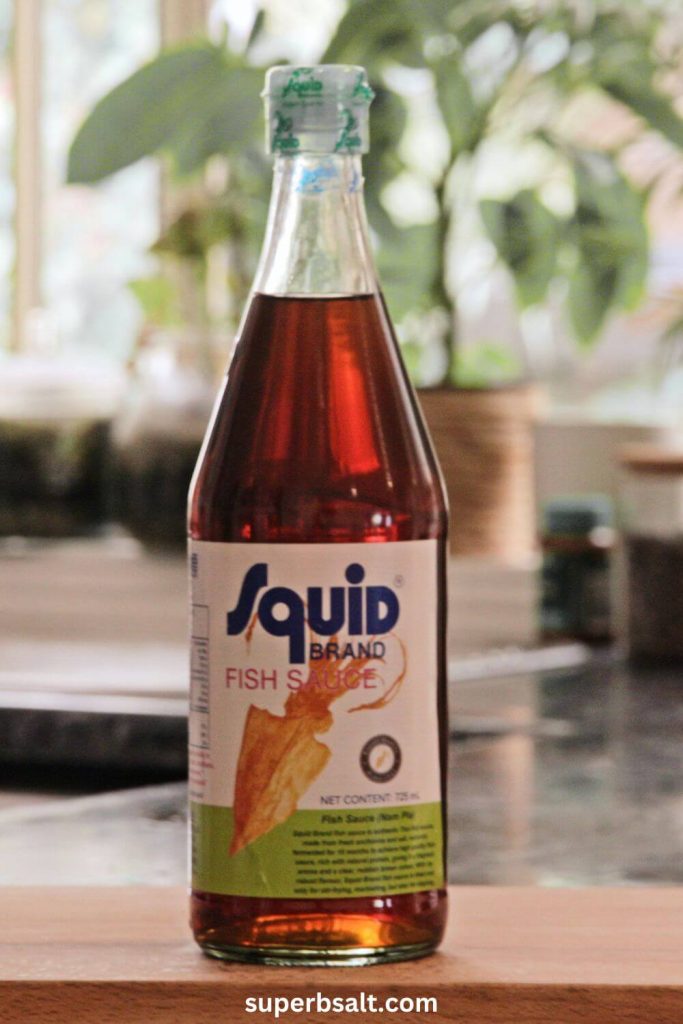
Miso Paste
Miso paste is a traditional Japanese seasoning produced by fermenting soybeans with salt and koji (a type of fungus) and sometimes other ingredients are added like rice or barley. The result is a thick, flavorful paste with a complex, salty-sweet, and umami-rich taste. Miso comes in various colors, such as white, yellow, red, or brown, each offering different intensities of flavor.
Now, let’s talk about using miso paste as a substitute for shrimp paste. While they’re distinct ingredients, miso can bring a depth of flavor to your dishes that’s somewhat reminiscent of shrimp paste. Here’s how to use it effectively:
- Choose the Right Type of Miso:
The type of miso you choose matters. White miso has a milder flavor, while red or brown miso is more robust. Consider the intensity of the shrimp paste in your recipe and choose accordingly. - Adjust Quantities:
Start with a smaller amount of miso paste compared to the quantity of shrimp paste in the recipe. Miso is concentrated, so a little does go a long way! Taste as you go and add more if needed. - Incorporate into Sauces and Marinades:
Miso paste works well in sauces, dressings, and also marinades. It dissolves easily, adding a savory depth that can complement the umami profile of shrimp paste. - Use in Soups and Stews:
Miso is a classic ingredient in Japanese soups like miso soup. You can incorporate it into soups and stews to bring a rich, savory element, similar to how shrimp paste might infuse depth into broths. - Blend with Other Ingredients:
For dishes that benefit from a paste-like consistency, consider blending miso with other ingredients like soy sauce, a touch of vinegar, or even a bit of tomato paste to mimic the complexity of shrimp paste.
Experimentation is the key – miso paste adds a unique flavor profile that can elevate your dishes in unexpected ways. So, the next time you’re looking for a shrimp paste alternative, try using miso paste.
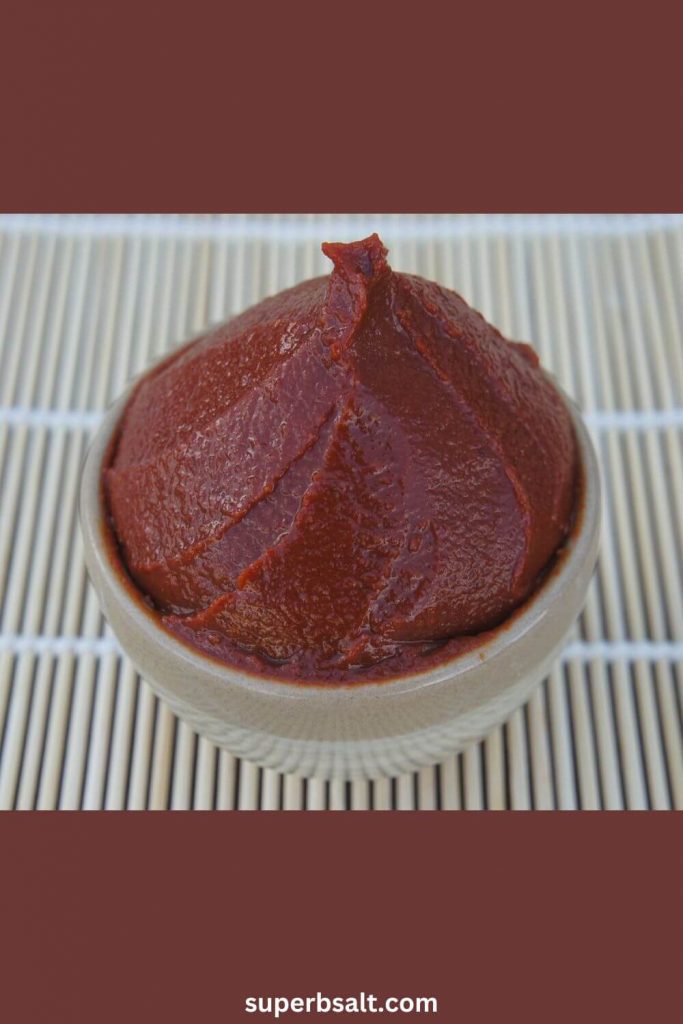
Soy Sauce and Anchovy Combo
The soy sauce and anchovy combo is a perfect duo that can serve as a flavorful substitute for shrimp paste, particularly in dishes that benefit from a salty and savory punch. Here’s the lowdown on this pairing and how you can use it:
Soy sauce is a staple in Asian cuisine, made from fermented soybeans, wheat, salt, and water. It contributes a salty and savory flavor to dishes, enhancing their overall umami profile. Whilst anchovy paste is a concentrated form of anchovies, providing a robust, salty, and fishy flavor. So what happens when you combine the two of them?
How to Use the Combo as a Substitute for Shrimp Paste:
- Mixing Ratios:
Start by combining soy sauce and anchovy paste in a bowl. The exact ratio will depend on your taste preferences and the dish you’re preparing. Always begin with a small amount of anchovy paste and then gradually add more if needed. - Adjusting Consistency:
If the original recipe calls for a paste-like consistency, you can blend the soy sauce and anchovy paste together. This blend can then be added to your dish to mimic the texture of shrimp paste. - Taste and Adjust:
Taste your mixture as you go. The goal is to achieve a balance of saltiness and umami that complements your dish. If it needs a touch of sweetness, why not consider adding a bit of sugar or honey? - Incorporate into Sauces and Marinades:
The soy sauce and anchovy combo works well in sauces and marinades. It can infuse your dish with a savory depth that is similar to the umami notes in shrimp paste. - Experiment with Stir-Fries and Dips:
Use the combo in stir-fries, dipping sauces, or any recipe where the bold, salty flavors of shrimp paste are essential. It can also add complexity and depth to your culinary creations.
Remember, the beauty of this substitute lies in its flexibility. Always adjust the ratios and ingredients based on the specific dish you’re preparing and also your personal taste preferences. So, whether you’re crafting a stir-fry, noodle dish, or curry, let the soy sauce and anchovy combo be your go-to for a delicious and satisfying alternative to shrimp paste!
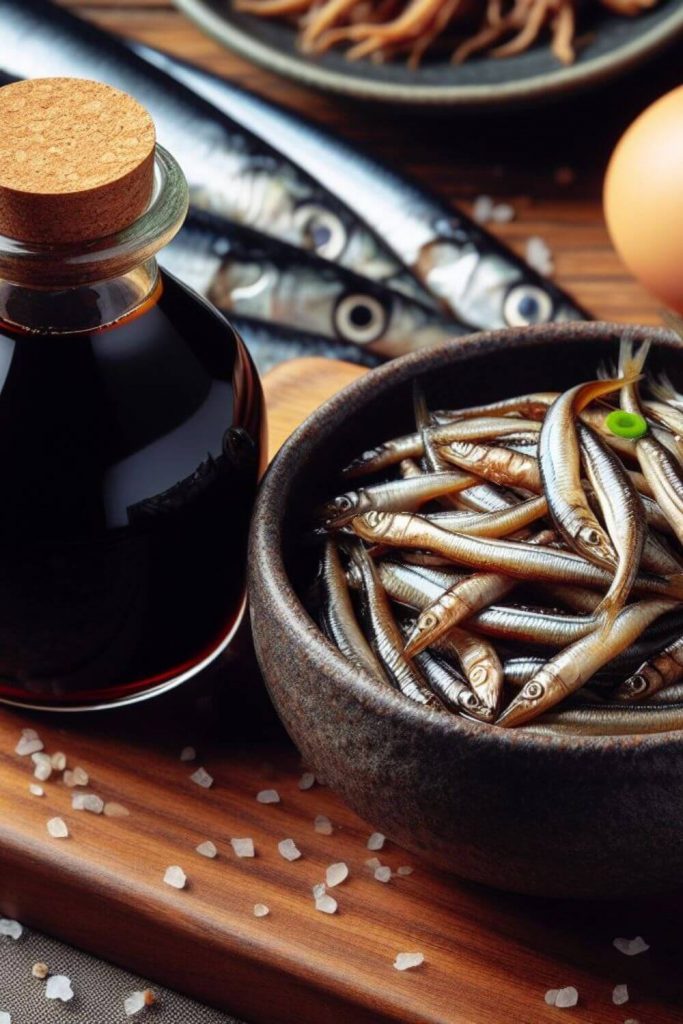
Sun-Dried Tomatoes
Sun-dried tomatoes are ripe tomatoes that have been dehydrated to remove most of their water content. This is done by slicing the tomatoes and then drying them in the sun, a dehydrator, or an oven. The result is a concentrated, intensely flavored ingredient with a sweet and tangy taste, that is often used to add depth to various dishes.
Now, let’s explore how you can use sun-dried tomatoes as a substitute for shrimp paste:
- Tomato Paste Alternative:
If your recipe calls for a paste-like consistency, you can blend rehydrated sun-dried tomatoes to create a thick, flavorful paste. This can be used similarly to how shrimp paste contributes richness and depth to a dish. - Umami Booster:
Sun-dried tomatoes bring a robust umami flavor to the table. You can use them to enhance the savory notes in your recipes, much like shrimp paste. Just add the chopped or pureed tomatoes to sauces, stews, or even soups for that extra depth. - In Pasta and Pizza:
Sun-dried tomatoes are a fantastic addition to pasta dishes and also pizzas. Their intense flavor can elevate simple pasta sauces or it can also bring a burst of sweetness to a pizza topping. Why not consider combining them with garlic, olive oil, and herbs for a delightful pasta sauce. - Mediterranean Flair:
Embrace the Mediterranean vibe by incorporating sun-dried tomatoes into salads, dips, or antipasto platters. Their concentrated flavor can add a zesty and sun-kissed touch to your dishes. - Sun-Dried Tomato Pesto:
Why not get creative and whip up a sun-dried tomato pesto. Blend rehydrated sun-dried tomatoes with garlic, basil, pine nuts, Parmesan cheese, and also some olive oil. This can serve as a flavorful alternative in recipes that call for shrimp paste. - Dip and Spread:
Or why not create a savory dip or spread by blending sun-dried tomatoes with cream cheese or yogurt. This can be a delicious accompaniment to crackers, bread, or veggies.
Remember to rehydrate the sun-dried tomatoes before using them in your recipes. Simply soak them in hot water for about 20-30 minutes until they become plump and tender. Whether you’re cooking up a Mediterranean feast or adding a twist to your favorite dishes, sun-dried tomatoes offer a versatile and tasty substitute for shrimp paste.
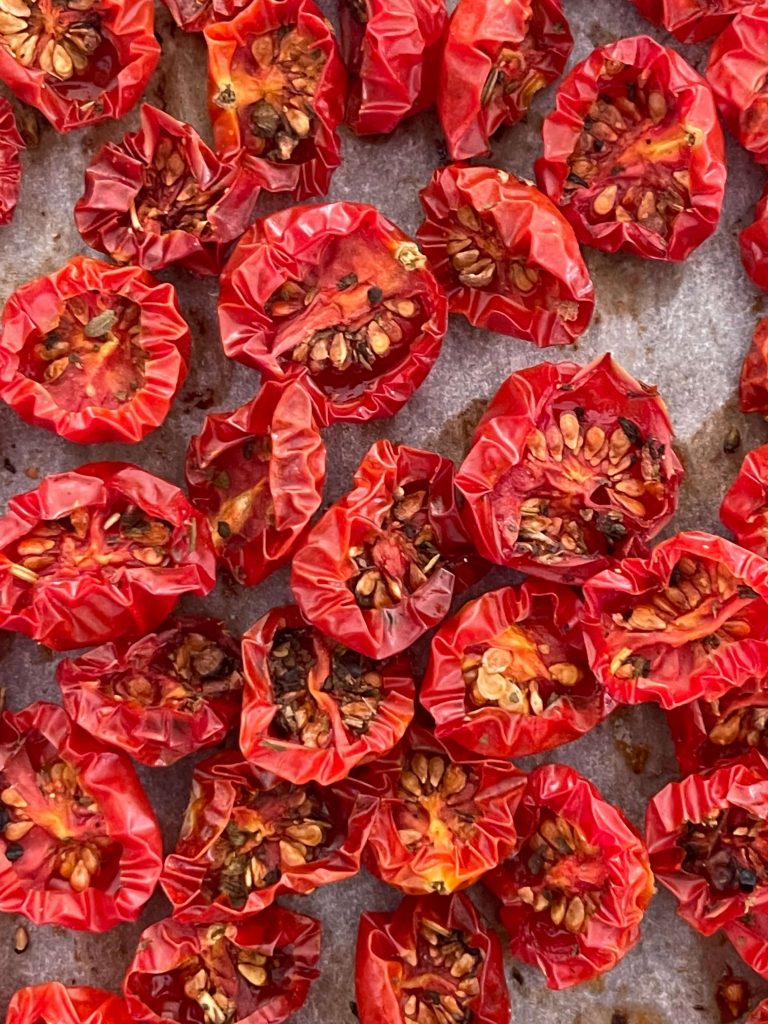
Tamarind Paste
Tamarind paste is a condiment derived from the pulp of the tamarind fruit. The fruit’s pod-like shape contains a sticky, sour pulp that is extracted, processed, and concentrated into a thick, tangy paste. Whilst tamarind paste is widely used in various cuisines, especially in Southeast Asian, Indian, and Middle Eastern cooking, it can be difficult to find in supermarkets.
Now, let’s explore how you can use tamarind paste as a substitute for shrimp paste:
- Tangy Umami Replacement:
Tamarind paste brings a unique sweet and sour flavor, making it a delightful substitute for the umami profile of shrimp paste. It won’t mimic the exact taste, but it can provide a complementary depth to your dishes. - Soups and Curries:
You can add tamarind paste to soups, stews, and curries to infuse them with its tangy goodness. Or, it also pairs well with coconut milk, spices, and savory ingredients, offering a complexity reminiscent of shrimp paste. - Dipping Sauces:
Try creating tangy dipping sauces by combining tamarind paste with soy sauce, garlic, and a touch of sweetness. This can work rather well as a substitute in recipes that call for shrimp paste in dipping sauces or dressings. - Marinades and Glazes:
Use tamarind paste as a base for marinades and glazes. Its bold flavor can enhance grilled meats or roasted vegetables, providing a savory-sweet element to the dish. - Stir-Fries with a Twist:
Introduce tamarind paste to your stir-fries for a unique twist. Its tanginess can cut through the richness of other ingredients, adding a burst of flavor to the overall dish. - Tamarind-based Sauces:
Make a tamarind-based sauce by combining the paste with ingredients like garlic, ginger, and chili. This sauce can be a versatile addition to various dishes, offering a complex flavor profile.
Remember to start with a small amount of tamarind paste and adjust according to your taste preferences. Tamarind’s distinct flavor can add an unexpected dimension to your recipes, providing a flavorful alternative when shrimp paste is unavailable. So, whether you’re whipping up a curry, stir-fry, or sauce, let tamarind paste add some tangy charm.
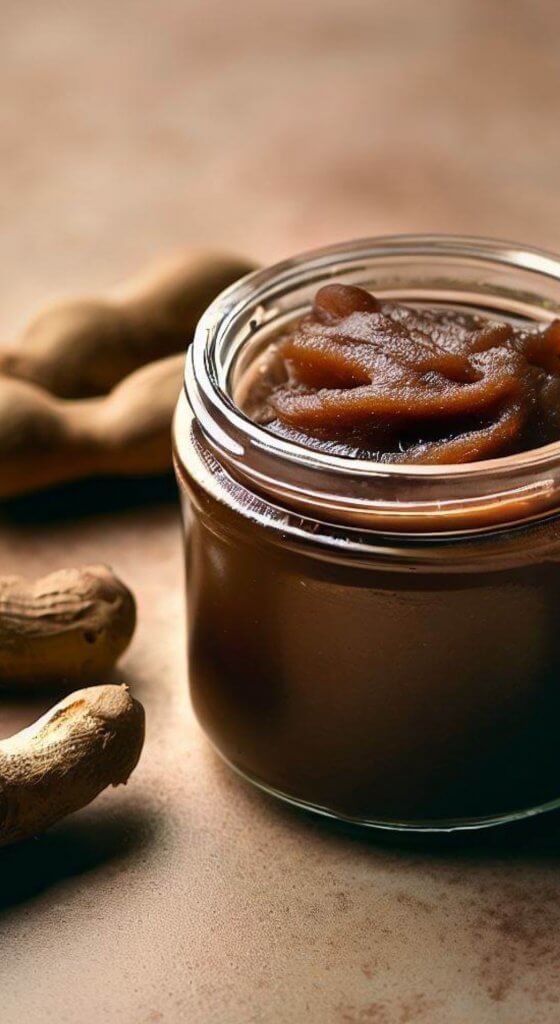
Oyster Sauce
Oyster sauce is a thick, dark, and savory condiment commonly used in Asian cuisine, particularly in Chinese cooking. It’s made by simmering oysters in water and then condensing the resulting broth into a flavorful sauce. While oyster sauce is not a perfect substitute for shrimp paste due to its different flavor profile, it can still add depth and umami to your dishes. Here’s how you can use oyster sauce as a substitute for shrimp paste:
- Umami Boost:
Oyster sauce is renowned for its umami-rich taste. Use it to add a savory and depth of flavor to your recipes, much like shrimp paste. It works particularly well in stir-fries, sauces, and marinades. - Stir-Fries and Sauteed Dishes:
Incorporate oyster sauce into stir-fries and sautéed dishes to impart a savory kick. Its thick consistency can contribute a similar richness to the dish, just as shrimp paste would. - Sauces and Marinades:
Create flavorful sauces and marinades by combining oyster sauce with other ingredients like soy sauce, garlic, ginger, and a hint of sweetness. This mixture can serve as a versatile replacement for shrimp paste in various recipes. - Stir-Fry Vegetables:
When preparing stir-fried vegetables or noodles, drizzle a bit of oyster sauce for added depth. It complements the natural sweetness of vegetables and enhances the overall flavor profile. - Marinated Meats:
Use oyster sauce as a component in meat marinades. Whether you’re grilling, roasting, or stir-frying, it can contribute a savory note that pairs well with different proteins. - Noodle Dishes:
You can also toss oyster sauce into noodle dishes for a quick and tasty alternative. Its concentrated flavor can transform a simple noodle recipe into a savory delight.
Always remember to adjust the quantity of oyster sauce based on your taste preferences and the specific dish you’re preparing. While not a shrimp paste replica, oyster sauce can certainly bring a delicious umami element to your recipes, offering a savory twist that enhances the liven up your dishes.
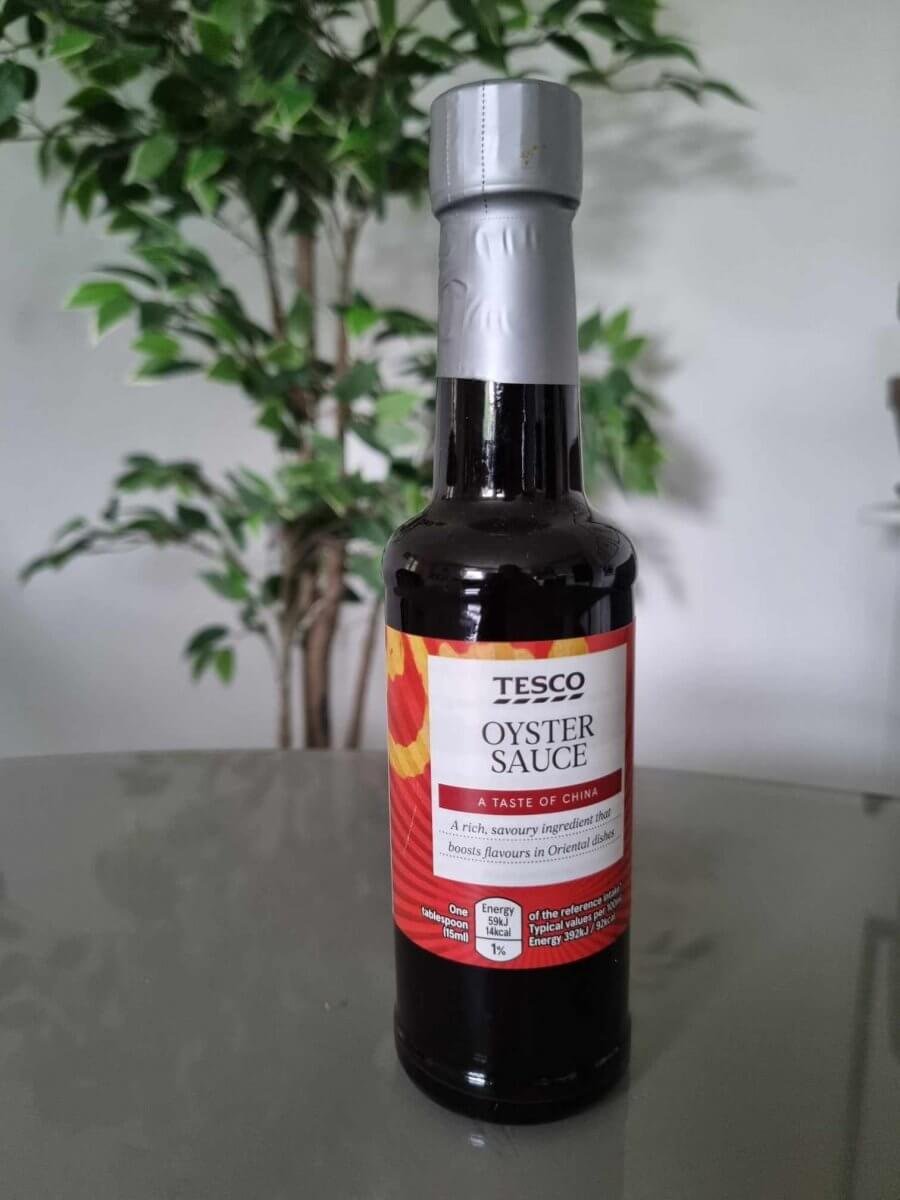
Bonito Flakes
Bonito flakes, also known as katsuobushi in Japanese cuisine, are dried, fermented, and smoked skipjack tuna flakes. These paper-thin shavings have a smoky and intensely savory flavor, making them a popular ingredient in Japanese cooking, especially for dashi broth, which is the foundation of many Japanese dishes.
Now, let’s explore how you can use bonito flakes as a substitute for shrimp paste:
- Umami Boost:
Bonito flakes are celebrated for their umami-rich profile. You can use them to impart a deep, savory taste to your dishes, similar to the complexity found in shrimp paste. - Dashi Base:
Why not create a bonito-flake-based broth as a substitute for shrimp paste in recipes that call for a flavorful liquid base. This can be particularly useful in soups, stews, and noodle dishes. - Infuse Flavor in Sauces:
Or add bonito flakes into sauces and dressings to infuse them with a smoky umami. And you can also blend the flakes with other liquid ingredients to create a rich and flavorful sauce. - Seafood Dishes:
Enhance the savory notes in seafood dishes by incorporating some bonito flakes. They pair well with various fish and shellfish, providing a complementary depth of flavor. - Vegetarian Dishes:
While not a perfect substitute, bonito flakes can add a layer of umami to vegetarian dishes. Use them to elevate the flavors in plant-based stews, stir-fries, or also soups. - Snack Toppings:
Sprinkle bonito flakes over snacks like popcorn or roasted nuts to add a unique and savory twist. The smokiness can create an interesting flavor combination.
Remember that bonito flakes have a distinct smoky taste, so consider the overall flavor profile of your dish before using them as a substitute for shrimp paste. Experiment with quantities and taste as you go to achieve the desired balance. While not an exact match, bonito flakes can offer a rich umami alternative that brings depth to your recipes when shrimp paste is not available.
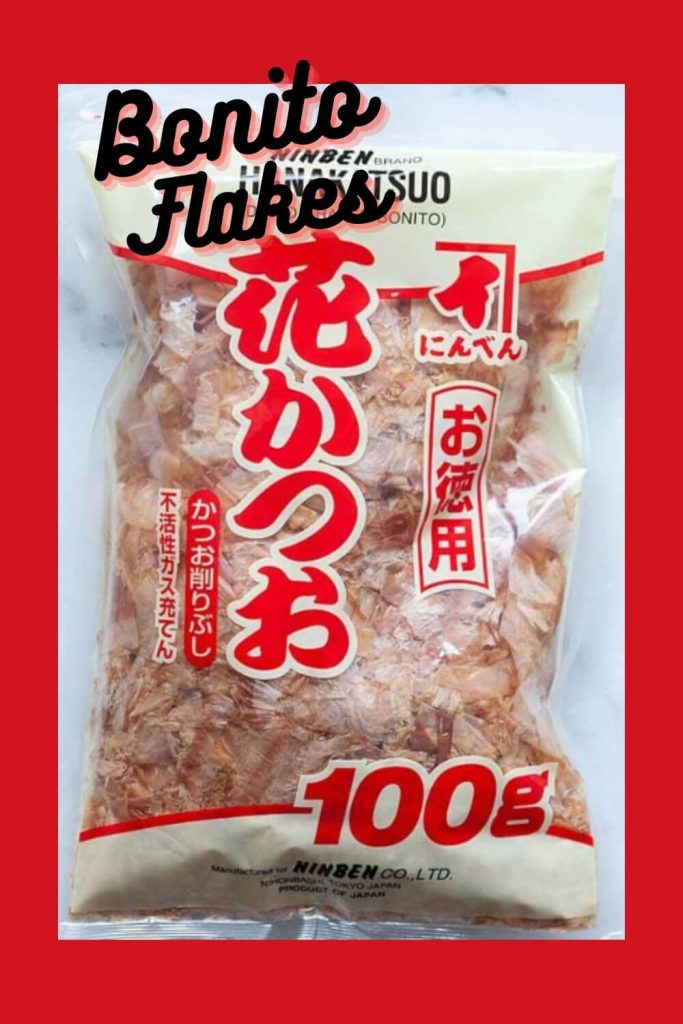
FAQs
What can I substitute for shrimp paste in Thai Green Curry?
For a Thai Green Curry, you can substitute shrimp paste with a mixture of fish sauce and a touch of soy sauce. This blend will provide a comparable umami richness to your curry, enhancing the flavor profile without the distinct shrimp undertones. Adjust quantities to taste, keeping in mind that fish sauce can be quite potent.
What is shrimp paste made from?
Shrimp paste is a condiment made from fermented ground shrimp, typically mixed with salt. The preparation involves salting the shrimp and allowing them to undergo a fermentation process. The result is a concentrated paste with a pungent and savory flavor, widely used in Southeast Asian cuisines to add depth and umami to various dishes.
Is shrimp paste the same as anchovy paste?
No, shrimp paste and anchovy paste are not the same. Shrimp paste is made from fermented ground shrimp, offering a distinct seafood flavor. Anchovy paste, on the other hand, is a concentrated form of anchovies, providing a salty and savory taste with a fishy undertone. While both contribute umami to dishes, they have different flavor profiles.
Summary for Shrimp Paste substitutes
Okay – that’s you all sorted with suitable substitutes for shrimp paste.
Alright, let’s hope you are happy with our suggestions for some fantastic shrimp paste alternatives. Here’s a roundup of everything we have sggested:
- Fish Sauce:
Often hailed as the go-to substitute, fish sauce brings a salty, umami kick to the party. It may not have the same thickness as shrimp paste, but in terms of flavor, it’s a reliable contender. - Miso Paste:
Unconventional, yet a winner. Miso’s fermented soy goodness introduces depth and richness, somewhat reminiscent of shrimp paste. Plus, it’s versatile and widely available. - Soy Sauce and Anchovy Combo:
Mix soy sauce with a touch of anchovy paste for a dynamic duo that mimics the complexity of shrimp paste. The salty and savory notes play well together. - Sun-Dried Tomatoes:
A surprising contender, sun-dried tomatoes can bring a robust umami flavor. Just blitz them into a paste, and voilà – a unique alternative with a hint of sweetness. - Tamarind Paste:
For a tangy twist, consider tamarind paste. It won’t match shrimp paste exactly, but its zesty, sour profile can complement a variety of dishes beautifully. - Oyster Sauce: Rich, umami-packed profile makes it a compelling substitute for shrimp paste. The thickness and depth it adds to your dishes are unparalleled. Just be mindful of its saltiness, and you’re in for a flavorful ride.
- Bonito Flakes: Enter the world of Japanese umami with bonito flakes. These paper-thin, smoky shavings from dried bonito fish are a secret weapon in many Asian kitchens. While not a direct substitute, their savory, fishy notes can enhance the complexity of your recipes, much like shrimp paste.
Experiment with these alternatives, keeping in mind the intensity of flavors and textures.
We have gathered together a lot more facts on ingredients such as herbs, spices, oils, nuts, etc. if you would like to learn some more.
Or if you need to swap out another ingredient have a look at our Substitutes section.
